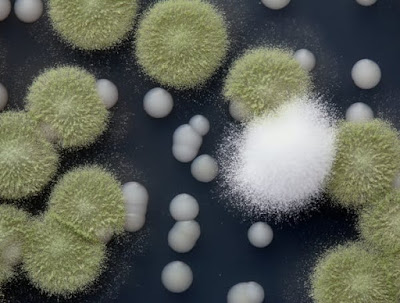mutants in your cheese
Contrasting the genomes of domesticated fungis to their wild family members assists researchers comprehend the hereditary modifications that triggered some preferred foods and beverages. However exactly just how did our forefathers really domesticate these wild fungis? None people existed to witness exactly just how everything began. To refix this secret, researchers are try out wild fungis to see if they could develop right into microorganisms resembling those that we utilize to earn our food today.
Benjamin Wolfe, a microbiologist at Tufts College, and his group dealt with this concern by taking wild Penicillium mold and mildew and expanding the examples for one month in his laboratory on a compound that consisted of cheese. That might seem like a brief duration for individuals, however it's one that covers numerous generations for fungis.
The wild fungis are really carefully associated with fungal stress utilized by the cheese market in the production of Camembert cheese, however appearance really various from them. For instance, wild stress are green and odor, well, moldy compared with the white and odorless commercial stress.
For Wolfe, the huge concern was whether he might experimentally recreate, and to what level, the procedure of domestication. What did the wild stress appearance and odor such as after a month of development on cheese? Incredibly, what he and his group discovered was that, at completion of the experiment, the wild stress looked a lot much a lot extra just like understood commercial stress compared to to their wild forefather. For instance, they were white in shade and scented a lot much less moldy.
Fungis invest a great deal of power creating pigments and poignant substances that allow them to contend and protect themselves. Living conveniently on a diet regimen of cheese and risk-free from killers implies that shedding the capcapacity to create, state, pigments might really be beneficial. That is since the power conserved could rather be invested towards development of the fungal nest. Beragam Jenis Taruhan Bola Online Di King88bet
However exactly just how did the wild stress transform right into a domesticated variation? Did it mutate? By sequencing the genomes of both the wild forefathers and the domesticated descendants, and determining the task of the genetics while expanding on cheese, Wolfe's group figured out that these modifications didn't occur with mutations in the organisms' genomes. Instead, they probably happened with chemical modifications that customize the task of particular genetics however do not really alter the hereditary code. Such supposed epigenetic adjustments could happen a lot much faster compared to mutations. The course towards domestication seems quicker compared to formerly believed, which will possibly motivate daring cheese manufacturers to start try out domesticating wild fungis for brand-new tastes.
While you enjoy your preferred foods and drinks this holiday, save a believed for these tiny fungis, exactly just how they developed their magnificent powers and exactly just how a lot much a lot extra dull our globe would certainly lack them.



